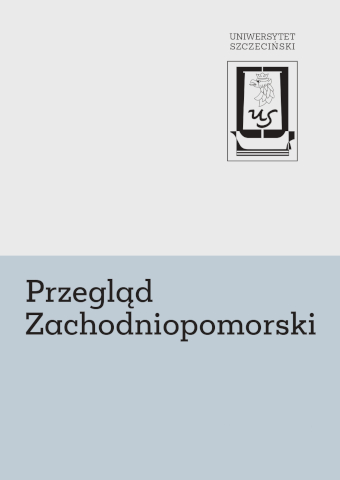| 1. | Adámek, Jan. „Bitevní výjev v gotickém sále píseckého hradu”. W: Prácheňské muzeum v Písku. Zpráva o činnosti, red. Jan Adamek, 39–42. Písek: Prácheňské muzeum, 1996. |
| 2. | Archiv Koruny české, 1, Rudolf Koss – Otakar Bauer, Dějiny archivu, v Praze: Nákladem Českého zemského výboru 1939. |
| 3. | Bobková, Lenka. „Markrabství braniborské v ruoku Lucemburků”. W: Korunní zemĕ v dĕjinách českého státu. T. 2: Společnĕ a rozdílné. Česká koruna v životĕ a vĕdomi jejích obyvatel ve 14.-16. století. Sborník příspěvků přednesených na kolokviu pořádaném ve dnech 12. a 13. května 2004 v Clam-Gallasově paláci v Praze, red. Lenka Bobková, Jana Konvičná, Ludĕk Březina, Jana Wojtucka, Praha, 159–190. |
| 4. | Ústí nad Labem: Albis International, 2005. |
| 5. | Boras, Zygmunt. Bogusław i Anna. W pięćsetną rocznicę ślubu księcia Pomorza Zachodniego Bogusława X i Anny Jagiellonki, 2 luty 1491 w Szczecinie. Szczecin: Polskie Pismo i Książka, 1991. |
| 6. | Čornej Petr, Milena Bartlová. Velké dějiny zemí Koruny České. T. 6, 1437–1526. Praha –Litomyšl: Paseka, 2007. |
| 7. | Czechowicz, Bogusław. „Traktat ołomuniecki z 1479 roku”. Śląski Kwartalnik Historyczny Sobótka 70 (2015), 4: 17–32. |
| 8. | Czechowicz, Bogusław. Idea i państwo. Korona Królestwa Czech w latach 1457–1547. T. 2. Sic noster rex Jiřík czy occupator regni Bohemiae? Rządy w Koronie Jerzego z Podiebradów. Wrocław: Quaestio, 2017. |
| 9. | Czechowicz, Bogusław. Idea i państwo. Korona Królestwa Czech w latach 1457–1547. T. 3. Mathias Primus Dei gratia rex Bohemiae. Rehabilitacja nieuznawanego króla. Wrocław: Quaestio, 2017. |
| 10. | Czechowicz, Bogusław. Idea i państwo. Korona Królestwa Czech w latach 1457–1547. T. 4. Król i stany. Cz. 2. Książęta i szlachta. Z. 2. Magnaci. Wrocław: Quaestio, 2020. |
| 11. | Durdík, Tomáš. Ilustrovaná encyklopedie českých hradů. Praha: Libri, 2000. |
| 12. | Durdík, Tomáš. Královský hrad v Písku. Písek: Prácheňské muzeum, 1993. |
| 13. | Felcman, Ondřej, Radek Fukala, red. Poděbradové. Rod českomoravských pánů, kladských hrabat a slezských knížat. Praha: Lidové noviny, 2008. |
| 14. | Fr. Thiede. Chronik der Stadt Stettin. Stettin: Verlag von Ferdinand Müller, 1849. |
| 15. | Konow, Karl-Otto. Bogislaw-Studien. Beiträge zur Geschichte Herzog Bogislaws X. von Pommern um die Wende vom 15. zum 16. Jahrhundert, Siegen 2003. |
| 16. | Kotlárová, Simona. Páni z Rožmitál. České Budějovice: Veduta, 2008. |
| 17. | Krása, Josef. „Nástěnná malba”. W: Pozdně gotické umění v Čechách (1471–1526), 255–314. Praha: Odeon, 1978. |
| 18. | Kuthan, Jiří. Královské dílo za Jiřího z Poděbrad z dynastie Jagellonců, 1, Král a šlecht.Praha: Univerzita Karlova v Praze, 2010. |
| 19. | Macek, Josef. Jagellonský vĕk v českých zemích. 1. Praha: Academia, 2001. |
| 20. | Macek, Josef. Tři ženy krále Vladislava. Praha: Mladá fronta, 1991. |
| 21. | Menclová, Dobroslava. České hrady. 1. Praha: Odeon, 1972. |
| 22. | Müller, Mario. „Der Glogauer Erbfolgestreit (1476–1482) zwischen den Markgrafen von Brandenburg, Herzog Johann II. von Sagan und Matthias Corvinus, König von Ungarn und Böhmen”. Slezský sborník 108 (2010): 22–59. |
| 23. | Nešněrová, Jana. „Das Urkundeninventar des Kronarchivs als Ständeprogramm für die Aufrecherhaltung der Integrität der Böhmischen Krone an der Schwelle zur Frühen Neuzeit”. W: Die Kronländer in der Geschichte des böhmischen Staates, 5, Geschichte– Erinnerung – Selbstidentifikation. Die schriftliche Kultur in den Ländern der Böhmischen Krone im 14.–18. Jahrhundert, red. Lenka Bobková, Mlada Holá, 168–188. Praga: Casablanca 2011. |
| 24. | Poche, Emanuel, red. Umělecké památký Čech, T. 3, P–Š. Praha: Academia, 1980. |
| 25. | Riedel, Adolph Friedrich, wyd. Codex diplomaticus Brandenburgensis. Sammlung der Urkunden, Chroniken und sonstigen Quellenschriften für die Geschichte der Mark Brandenburg und ihrer Regenten, 2, 5. Berlin: F.H. Moritz, 1848. |
| 26. | Roubic, Antonín. „Benedikt z Valdštejna, olomoucký probošt a biskup v Pomořanech – Benedictus Episcopus Caunicensis in Marchia”. Vlastivědný věstník moravský 44 (1992): 45–57. |
| 27. | Rymar, Edward. Rodowód książąt pomorskich. Szczecin: Książnica Pomorska im. Stanisława Staszica, 2005. |
| 28. | Schmeller, Johann Andreas, red. Des böhmischen Herrn Leo‘s von Rožmital Ritter-, Hofund Pilger-Reise durch die Abendlande 1465–1467. Stuttgart: Literarischen Verein 1844. |
| 29. | Sedláček, August. Hrady, zámky a tvrze Království Českého. T. 7. Písecko. Praha: Knihtiskárna Františka Šimáčka, 1889. |
| 30. | Šimůnek, Robert. Reprezentace české středověke šlechty. Praha: Argo, 2013. |
| 31. | Smołucha, Janusz. „Powikłane losy żon króla Czech i Węgier Władysława II Jagiellończyka”. W: Świat kobiet w Czechach i w Polsce w średniowieczu i w epoce nowożytnej, red. Wojciech Iwańczak, Agnieszka Januszek-Sieradzka, Janusz Smołucha, 39–61. Kraków: Wydawnictwo Naukowe Akademii Ignatianum w Krakowie 2018. |
| 32. | Soukup, Josef. Soupis památek historických a uměleckých v politickém okresu píseckém. Praha: Archeologická Kommise při české Akademi Čísaře Františka Josefa pro vĕdy, slovesnost a umĕní, 1910 (= Soupis památek historických a uměleckých v Kralovství českém, 33). |
| 33. | Szczegóła, Hieronim. „Głogowska wojna sukcesyjna”. W: Glogovia Maior. Wielki Głogów między blaskiem dziejów i cieniem ruin, red. Bogusław Czechowicz, Małgorzata Konopnicka, 99–109. Głogów–Zielona Góra: Wydawnictwo Uniwersytetu Zielonogórskiego, 2010. |
| 34. | Wachowiak, Bogdan. „Szczecin w okresie przewagi państwa feudalnego 1478–1713”. W: Gerard Labuda, red. Dzieje Szczecina. T. 2: Wiek X – 1805, 197–275. Warszawa–Poznań: Państwowe Wydawnictwo Naukowe, 1985. |
| 35. | Wehrmann, Martin. Geschichte von Pommern, 1. Gotha: Friedrich Andreas Perthes, 1919. |
| 36. | Wehrmann, Martin. Genealogie des pommerschen Herzogshauses. Stettin: Saunier, 1937. |







